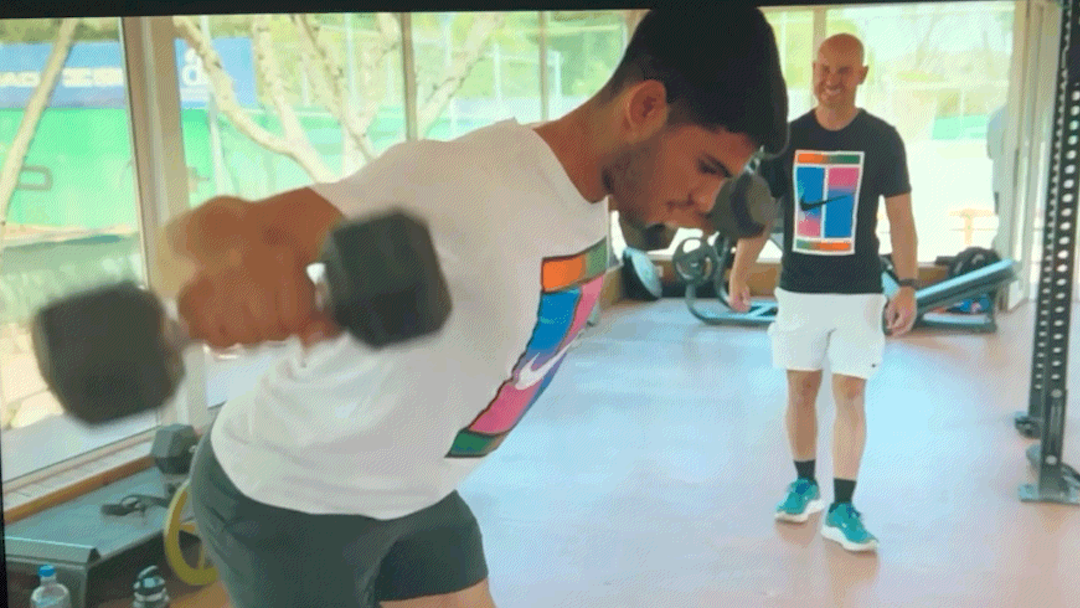A long, long time ago… in what now feels like a galaxy far, far, away, I decided it would be a good idea to break down all the training techniques glimpsed in the background of the Netflix docuseries “Break Point.” At the time I thought the endeavor would last a couple of months, but it’s been almost two years of weekly posts featuring the incidental training exercises glimpsed on the show. This marathon is now in Season 2, Episode 5 with a storyline that revolves around Maria Sakkari and Jessica Pegula as they both struggle to win tournaments.
Shortly before a semi-final match at the Mubadala City DC Open against Sakkari, Pegula is seen performing a partner leg raise exercise as a part of her pre-match muscle activation routine.

The partner leg raise is a highly effective exercise that every tennis player should consider adding to their routine. It strengthens the core, builds endurance, and enhances flexibility, which are all essential for improving tennis performance. (Stop me if you’ve heard this paragraph before on this site. I feel like it is something I write over and over.)
The partner leg raise starts by lying on your back with legs extended and a training partner standing above your head. Reach up and grasp the training partner’s ankles with your hands for stability. Engage the core and raise the legs straight up toward the partner’s hands. Once the legs are fully raised, the partner gently pushes them back down into a controlled descent. This motion should be repeated for 10 to 15 repetitions.
The partner leg raise is particularly beneficial for tennis players because it directly targets core strength. That is critical for maintaining stability, balance, and rotational power on the court. It is particularly good for the abs, obliques, and hip flexors.
In addition to core strength, the partner leg raise improves endurance, mimicking the controlled movements and stamina required to stay agile during a match. It also promotes better flexibility and range of motion, which are vital for lateral movement and reaching low balls. A strong core can help prevent common tennis injuries like lower back strain or abdominal pulls.
I’d probably do this exercise more if I had a willing training partner. As it is, I am relegated to a variation of grabbing the base of doing this one using my exercise bench as an anchor, which is a reasonable variation.
Tennis players serious about improving their performance should consider adding the partner leg raise to their routines. It can be a valuable addition to your training arsenal.
Fiend At Court participates in the Amazon associates program and receives a paid commission on any purchases made via the links in this article. Details on the disposition of proceeds are available on the “About Fiend at Court” page.



